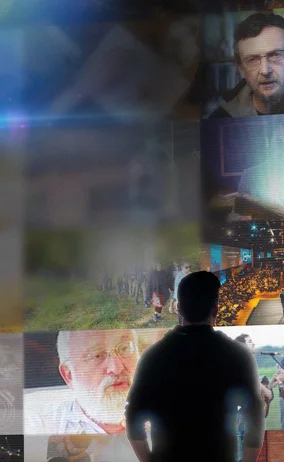Already a member?Sign in

Already a member?Sign in
Emergence is a natural phenomenon, where the connection between individuals gives rise to new, higher, and unpredictable properties. The individual parts—ants, plants, brain cells, and atoms—form some sort of superorganism, a collective being seemingly with a mind of its own.
We see this happening throughout nature but we do not know how it works. And when it comes to emergence between human beings, we know even less.
Could we connect together more than simply building cities or through venue technologies?
Could we connect in a way that could lead to a discovery of a whole new level of existence, a reality with unfamiliar properties we do not currently see and feel?
Unique scientists called “kabbalists” describe the discovery of the emergent properties of human connection as a higher level of human existence. They describe the attainment of a profound knowledge of reality, as well as a sense of wholeness and harmony. These are inaccessible to us as individual human beings.
This sounds contradictory and intangible to the reality we are familiar with—full of conflicts, wars, selfish interests, chaos, emptiness, and depression. If kabbalists can actually perceive the emergent level of human connection, how is it possible for two completely opposite realities to exist at the same time?
The question of duality was asked by scientists and philosophers a long time ago with different theories until in the 21st century. We revealed, through quantum physics, that light can actually behave through dual qualities: it can behave as particles and as waves.
Einstein described two contradictory pictures of reality where separately neither of them fully explains the phenomenon of light, but together they do. Others extended this theory of duality to everything else in reality.
So the question stands: Is reality in a single state at one time, or is it in a distribution of different states all at the same time?
As it turns out, matter behaves both as waves and as particles, and it is true to atoms, molecules, and bigger things we know from our everyday life—including our biological body.
This means that the universe is in multiple states at the same time. Here, the wisdom of Kabbalah—similar to how physicists describe duality on the level of matter—describes two contradictory levels of human existence. On one level, we are separate individuals, each with personal interests and desires, while on the other level, we are interconnected as a single whole.
So what are we missing to access the emergent state?
When we tune into our favorite radio station it does not mean the other stations do not exist. We can change the station we listen to by changing the frequency.
Our perception works in the same way. If we want to perceive something new, we have to change the frequency within us.
Our instinctive frequency is an individual one. But if we learn how to tune our frequency to perceive our inherent human connection, as kabbalists describe, we will find 125 degrees of the emergent properties of human connection.
All those 125 degrees are perceived while we maintain our ordinary physical perception as individuals. In parallel, the emergent state of human connection exists in potential until we learn how to tap into it.
In conclusion: Physicists found that the universe exists in multiple states at the same time. Similarly, kabbalists found that human existence happens on multiple levels simultaneously. To experience these multiple states we have to expand the frequency of human perception.
If there is a reality of harmonious connections between human beings that can give us a sense of wholeness and fulfillment and at the same time, the reality of eight billion separated individuals sensing a great deal of conflicts and suffering, then what is reality in the first place?